- Sorry, this product is unavailable.
-

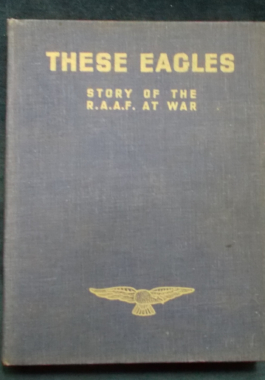 With stories, sketches and photographs from the servicemen and women of the Royal Australian Air Force. No 'Boys Own' adventures here - these are real tales of man's condition, actions and reactions in wartime. From Out Of Control: To watch Mother Earth rushing up to meet you while you are fighting a spine at a mere few thousand feet does not increase your expectation of a long and useful life... There's the ground crew blokes, the high-altitude men, the U-boat spotters, the Old New Contemptibles; the ladies of the W.A.A.A.F get a salute from the boys. There's even cartoons - such as one would expect from an Aussie view of things. Illustrated with sketches, black and white photographs and colour plates.
With stories, sketches and photographs from the servicemen and women of the Royal Australian Air Force. No 'Boys Own' adventures here - these are real tales of man's condition, actions and reactions in wartime. From Out Of Control: To watch Mother Earth rushing up to meet you while you are fighting a spine at a mere few thousand feet does not increase your expectation of a long and useful life... There's the ground crew blokes, the high-altitude men, the U-boat spotters, the Old New Contemptibles; the ladies of the W.A.A.A.F get a salute from the boys. There's even cartoons - such as one would expect from an Aussie view of things. Illustrated with sketches, black and white photographs and colour plates. -

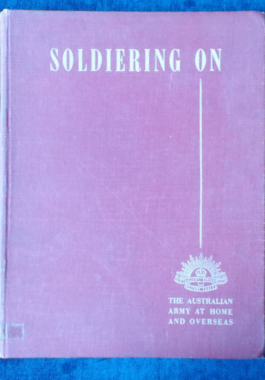 The Australian Army at Home and Overseas, by Some of the Boys and published by the Australian War Memorial, Canberra, 1942. Chapters include: Star Over Bethlehem; Diggers in Britain; Midnight Messiah; Purple's Pup; Arab Justice; Digger v. Doughboy and so much more. Our boys' impressions of Christmas in a cold climate and local customs as well as the American servicemen and women here in Australia. The colour plates, interestingly, are pasted in. Tales, jokes, sketches, cartoons and on-the-spot experiences a-plenty. Illustrated in colour and black and white. A treasure mine of information.
The Australian Army at Home and Overseas, by Some of the Boys and published by the Australian War Memorial, Canberra, 1942. Chapters include: Star Over Bethlehem; Diggers in Britain; Midnight Messiah; Purple's Pup; Arab Justice; Digger v. Doughboy and so much more. Our boys' impressions of Christmas in a cold climate and local customs as well as the American servicemen and women here in Australia. The colour plates, interestingly, are pasted in. Tales, jokes, sketches, cartoons and on-the-spot experiences a-plenty. Illustrated in colour and black and white. A treasure mine of information. -
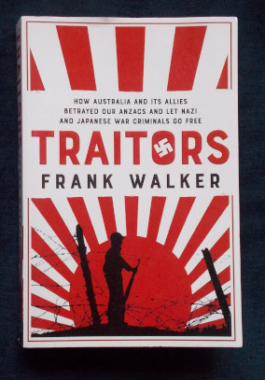
Traitors: Frank Walker
$20.00In October 1943 Winston Churchill, Franklin D. Roosevelt and Josef Stalin signed a solemn pact that once their enemies were defeated the Allied powers would 'pursue them to the uttermost ends of the earth and will deliver them to their accusers in order that justice may be done'. Nowhere did they say that justice would be selective. But it would prove to be just that. This book outlines the treachery of the British, American and Australian governments who turned a blind eye to those who experimented on Australian prisoners of war with details on how Nazis hired by ASIO were encouraged to settle in Australia and how the Catholic Church, CIA and MI6 helped the worst Nazi war criminals escape justice. While our soldiers were asked to risk their lives for King and country, Allied corporations traded with the enemy; Nazi and Japanese scientists were enticed to work for Australia, the US and UK; and Australia's own Hollywood hero Errol Flynn was associating with Nazi spies...What else did they hide? -
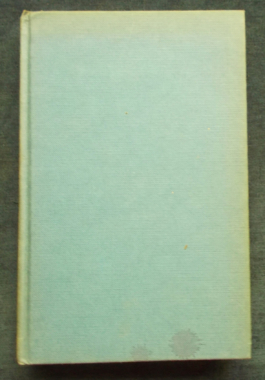
 They were American and British air force officers in a German prison camp. With only their bare hands and the crudest of homemade tools, they sank shafts, forged passports, faked weapons, and tailored German uniforms and civilian clothes. They developed a fantastic security system to protect themselves from German surveillance. It was a split-second operation as delicate and as deadly as a time bomb. It demanded the concentrated devotion and vigilance of more than six hundred men - every one of them, every minute, every hour, every day and night for more than a year. With black and white photographs.
They were American and British air force officers in a German prison camp. With only their bare hands and the crudest of homemade tools, they sank shafts, forged passports, faked weapons, and tailored German uniforms and civilian clothes. They developed a fantastic security system to protect themselves from German surveillance. It was a split-second operation as delicate and as deadly as a time bomb. It demanded the concentrated devotion and vigilance of more than six hundred men - every one of them, every minute, every hour, every day and night for more than a year. With black and white photographs. -
 Using secret American, British and German sources previously unavailable, this story appears almost incredible. Few people know that behind all of the great decisions- and many of the small ones - of the past two world wars, lay information gathered from secret intelligence, either from agents or intercepted coded messages. At the time of writing the whole structure was still classified, yet Farago was able to obtain German records that had been lost for a generation, revealing a vast espionage network strung across Britain and the United States. He also shows how the Germans mopped up the British espionage network in 1939, and how it was painfully and carefully rebuilt by a new generation of British intelligence officers who cracked the German codes and fed false information to the Abwehr throughout the war, eventually contributing to the defeat of the Axis powers.
Using secret American, British and German sources previously unavailable, this story appears almost incredible. Few people know that behind all of the great decisions- and many of the small ones - of the past two world wars, lay information gathered from secret intelligence, either from agents or intercepted coded messages. At the time of writing the whole structure was still classified, yet Farago was able to obtain German records that had been lost for a generation, revealing a vast espionage network strung across Britain and the United States. He also shows how the Germans mopped up the British espionage network in 1939, and how it was painfully and carefully rebuilt by a new generation of British intelligence officers who cracked the German codes and fed false information to the Abwehr throughout the war, eventually contributing to the defeat of the Axis powers. -
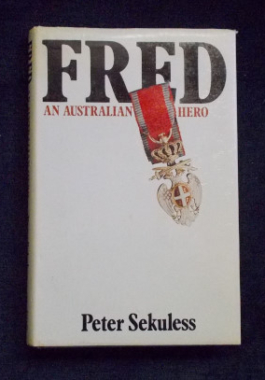 Toward the end of 1977, articles appeared in Australian newspapers about a remarkable 97 year-old Australian who had just died in Khartoum. They told of an heroic figure who had been with General Freyberg, then a junior officer, when he made his daring Dardenelles swim before the landing at Gallipoli; who had been mentioned in dispatches at the Battle of Beersheba; who had been with Lawrence of Arabia and who had won several decorations, including the George Cross for bravery under fire when he was chauffeur to the Governor-General of the Sudan at the time of his assassination in Cairo in 1924. He was one of the few Australians ever to win the coveted Serbian Eagle. This incredible Australian was Frederick Hamilton March. The newspaper articles so intrigued Sekuless than he began keeping a file on Fred March. Eventually, he travelled to Khartoum, Cairo, Gallipoli and London in a quest for information about this elusive and unknown Aussie hero to piece together the fascinating story of Fred March. Illustrated with black and white archival photographs.
Toward the end of 1977, articles appeared in Australian newspapers about a remarkable 97 year-old Australian who had just died in Khartoum. They told of an heroic figure who had been with General Freyberg, then a junior officer, when he made his daring Dardenelles swim before the landing at Gallipoli; who had been mentioned in dispatches at the Battle of Beersheba; who had been with Lawrence of Arabia and who had won several decorations, including the George Cross for bravery under fire when he was chauffeur to the Governor-General of the Sudan at the time of his assassination in Cairo in 1924. He was one of the few Australians ever to win the coveted Serbian Eagle. This incredible Australian was Frederick Hamilton March. The newspaper articles so intrigued Sekuless than he began keeping a file on Fred March. Eventually, he travelled to Khartoum, Cairo, Gallipoli and London in a quest for information about this elusive and unknown Aussie hero to piece together the fascinating story of Fred March. Illustrated with black and white archival photographs. -

For the first time since the early sixties there is widespread and growing concern about the possibility of a Third World War, given the massive stockpile of nuclear armaments and the growing tensions between superpowers. The author, the grandson of Winston Churchill, shows how this situation has arisen and provides the facts and figures to ensure a true understanding of the issues at stake. What is the balance of armed power in the world today? What are the chances of either side winning a nuclear war? How should the Western Allies respond to the growing global challenge from Russia? These and more questions are answered - the answers echo the warnings that were made about the threat from Nazi Germany. Those warnings went unheeded.
-
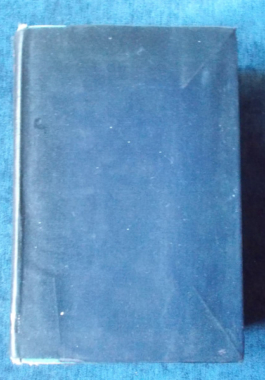
 Subtitle: A True Story Of Adventure From The Arctic To The Argonne. Described as the biography of a common soldier with thirty three years of service in the American Army, this 'uncommon' soldier distinguished himself in the Argonne in World War I and several other conflicts. Samuel Woodfill was regarded as being a true American frontiersman who seems to have had many and varied adventures, given such chapter headings as: I Was Born with a Gun in My Hands; A Surprise Attack and Escape Over A Precipice; Out of Company C Only Four Men Survived; The Tragedy of A Medicine Man; The Strange End of Sam Gowler and many others just as intriguing. Illustrated with black and white photographs.
Subtitle: A True Story Of Adventure From The Arctic To The Argonne. Described as the biography of a common soldier with thirty three years of service in the American Army, this 'uncommon' soldier distinguished himself in the Argonne in World War I and several other conflicts. Samuel Woodfill was regarded as being a true American frontiersman who seems to have had many and varied adventures, given such chapter headings as: I Was Born with a Gun in My Hands; A Surprise Attack and Escape Over A Precipice; Out of Company C Only Four Men Survived; The Tragedy of A Medicine Man; The Strange End of Sam Gowler and many others just as intriguing. Illustrated with black and white photographs. -

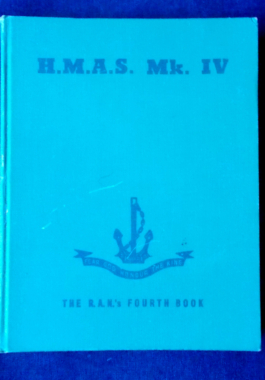 Published in 1945, this volume is literally by the men serving in the last days of World War II. Together, these articles, sketches, cartoons, poems and photographs are their story - not the story of the war, but a record of what they saw, felt and experienced. There's a humorous treatise on the Cockroach; an article on the first W.R.A.N.s to receive their sea training; and from an article simply entitled Tahiti by 'A.S.' : After dancing for a while I suggested a walk along the beach and the girls being agreeable were were soon settled down on the sands under the palms. Here is what I saw and felt. The moon shining through the palm fronds on the sand, while farther out the blue Pacific was breaking over the reefs, the moonlight making this appear like a lot of silvery cascades...my young lady's hair was lovely, and long enough to reach down and encircLe our waists, binding us together...I had read of scene such as these, but doubted them...Now I knew and felt...happy and contented and prepared to fall in love." One hopes that 'A.S. made his way home to Australia.
Published in 1945, this volume is literally by the men serving in the last days of World War II. Together, these articles, sketches, cartoons, poems and photographs are their story - not the story of the war, but a record of what they saw, felt and experienced. There's a humorous treatise on the Cockroach; an article on the first W.R.A.N.s to receive their sea training; and from an article simply entitled Tahiti by 'A.S.' : After dancing for a while I suggested a walk along the beach and the girls being agreeable were were soon settled down on the sands under the palms. Here is what I saw and felt. The moon shining through the palm fronds on the sand, while farther out the blue Pacific was breaking over the reefs, the moonlight making this appear like a lot of silvery cascades...my young lady's hair was lovely, and long enough to reach down and encircLe our waists, binding us together...I had read of scene such as these, but doubted them...Now I knew and felt...happy and contented and prepared to fall in love." One hopes that 'A.S. made his way home to Australia. -
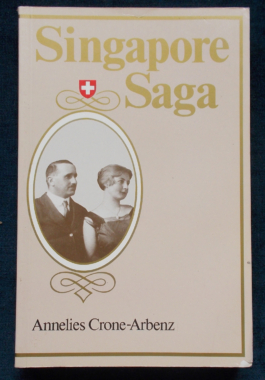 Part One of this autobiography relates the dramatic escape to Australia of three young Swiss sisters during the Japanese invasion of Singapore, then traces their gradual and complete adaption to the Australian way of life by the youngest sister, Annelies. Part Two is the story of their father, the Swiss Consul and their mother Gritli, who remained in Singapore at their posts in dedication to their community. This second part is translated from the recently discovered original diaries of their father, Rudolph Arbenz.
Part One of this autobiography relates the dramatic escape to Australia of three young Swiss sisters during the Japanese invasion of Singapore, then traces their gradual and complete adaption to the Australian way of life by the youngest sister, Annelies. Part Two is the story of their father, the Swiss Consul and their mother Gritli, who remained in Singapore at their posts in dedication to their community. This second part is translated from the recently discovered original diaries of their father, Rudolph Arbenz. -
 In the split second that it took Associated Press photographer Joe Rosenthal to snap the shutter of his Speed Graphic, a powerful and enduring American symbol was born. Iwo Jima: Monuments, Memories and the American Hero tells the story of that icon as it appeared over the next 40 years in bond drive posters, stamps, Hollywood movies, political cartoons, and sculpture, most notably the colossal Marine Corps War Memorial outside Washington, D.C. It is also a brilliant and moving study of the soldiers who fought one of the bloodiest battles in modern warfare and the impact that Iwo Jima had on the rest of their lives. The battle of Iwo Jima raged for many days and ultimately claimed the lives of almost 7000 American serviceman, yet that famous photo - a grainy outline of massed men and their flag - already symbolised victory.
In the split second that it took Associated Press photographer Joe Rosenthal to snap the shutter of his Speed Graphic, a powerful and enduring American symbol was born. Iwo Jima: Monuments, Memories and the American Hero tells the story of that icon as it appeared over the next 40 years in bond drive posters, stamps, Hollywood movies, political cartoons, and sculpture, most notably the colossal Marine Corps War Memorial outside Washington, D.C. It is also a brilliant and moving study of the soldiers who fought one of the bloodiest battles in modern warfare and the impact that Iwo Jima had on the rest of their lives. The battle of Iwo Jima raged for many days and ultimately claimed the lives of almost 7000 American serviceman, yet that famous photo - a grainy outline of massed men and their flag - already symbolised victory. -
 June, 1942. Johnnie Houlton has arrived in Britain from New Zealand under the Empire Training Scheme only a few months before. From then on and for the next few years, he was almost constantly in action or seeking action with 485 (NZ) Spitfire Squadron. He volunteered for service in Malta and sharply describes the drama of the convoy that took him there and the five months of siege conditions on the island. Houlton vividly recalls the atmosphere and the incidents of the air war from a pilot's-eye view, together with the development and technique of fighter operations - covering daylight bombing missions, low-level bombing and strafing and the formation of the Second Tactical Air Force in support of land forces. Illustrated with black and white photographs.
June, 1942. Johnnie Houlton has arrived in Britain from New Zealand under the Empire Training Scheme only a few months before. From then on and for the next few years, he was almost constantly in action or seeking action with 485 (NZ) Spitfire Squadron. He volunteered for service in Malta and sharply describes the drama of the convoy that took him there and the five months of siege conditions on the island. Houlton vividly recalls the atmosphere and the incidents of the air war from a pilot's-eye view, together with the development and technique of fighter operations - covering daylight bombing missions, low-level bombing and strafing and the formation of the Second Tactical Air Force in support of land forces. Illustrated with black and white photographs. -
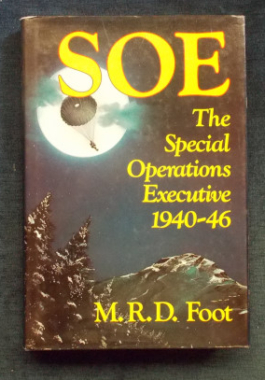
S.O.E. was a small, tough British secret service dirty-tricks department. Its job was to support and stimulate resistance in occupied countries. It was wound up after the war. Its total strength was never more than 10,000 men and 3,200 women, over a third of them secret agents - it exercised vast influence on the war all over the world. This is a readable volume on how S.O.E was created and run, the calibre of the men and women involved, what tools they used and how, when and where they used them, where they did well - and where they did badly. Illustrated with black and white photographs.
-


The Australian Army at Home and Overseas, by Some of the Boys and published by the Australian War Memorial, Canberra, 1942. Chapters include: Star Over Bethlehem; Diggers in Britain; Midnight Messiah; Purple's Pup; Arab Justice; Digger v. Doughboy and so much more. Our boys' impressions of Christmas in a cold climate and local customs as well as the American servicemen and women here in Australia. The colour plates, interestingly, are pasted in. Tales, jokes, sketches, cartoons and on-the-spot experiences a-plenty. Illustrated in colour and black and white. A treasure mine of information.
-
 World War II gave rise to an astonishing number of unorthodox 'special forces' yet this is the first book to assess their contribution to the final victory or how they related to one another and to the more conventional fighting forces. In 1939 'Special Forces' did not exist; it was Churchill who ordered them to 'set Europe ablaze'. Operating under the cloak of secrecy during wartime and quickly disbanding after it they have not often received credit for their achievements. From early 'butcher and bolt' raids by parachutists and commandos to SOE activities in the Balkans and France; 'Merrill's Marauders' and Windgate's Chindits in Burma, Special Forces were active in all great theatres of war. They played a vital role in intelligence-gathering, Anglo-American co-operation, sabotage, the fostering of local resistance movements and guerilla fighting. They denied 'heavy water' to Germany, making it impossible for that country to manufacture an atomic bomb and crucially affected the balance of air power in the Western Desert in 1942. Here are survivors' stories - courageous men and women, many of whom have become legendary. With black and white photographs.
World War II gave rise to an astonishing number of unorthodox 'special forces' yet this is the first book to assess their contribution to the final victory or how they related to one another and to the more conventional fighting forces. In 1939 'Special Forces' did not exist; it was Churchill who ordered them to 'set Europe ablaze'. Operating under the cloak of secrecy during wartime and quickly disbanding after it they have not often received credit for their achievements. From early 'butcher and bolt' raids by parachutists and commandos to SOE activities in the Balkans and France; 'Merrill's Marauders' and Windgate's Chindits in Burma, Special Forces were active in all great theatres of war. They played a vital role in intelligence-gathering, Anglo-American co-operation, sabotage, the fostering of local resistance movements and guerilla fighting. They denied 'heavy water' to Germany, making it impossible for that country to manufacture an atomic bomb and crucially affected the balance of air power in the Western Desert in 1942. Here are survivors' stories - courageous men and women, many of whom have become legendary. With black and white photographs. -
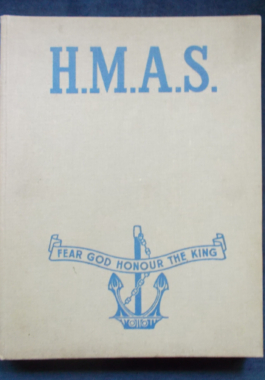 From the foreword: H.M.A.S. is the first attempt to give to the men of the Royal Australian Navy and to Australians generally, a story in some connected form, leavened by the thoughts and experiences of the actors themselves... Here is their story, told by the men themselves: war stories, funny stories, cartoons, paintings and photographs, all of which express the range of emotions these men felt and experienced. With colour plates tipped-in (as at publication), black and white sketches and photographs. A real treasure for those interested in the stories of everyday men that were not often heard. Here is the chance to listen to them tell it as it really was.
From the foreword: H.M.A.S. is the first attempt to give to the men of the Royal Australian Navy and to Australians generally, a story in some connected form, leavened by the thoughts and experiences of the actors themselves... Here is their story, told by the men themselves: war stories, funny stories, cartoons, paintings and photographs, all of which express the range of emotions these men felt and experienced. With colour plates tipped-in (as at publication), black and white sketches and photographs. A real treasure for those interested in the stories of everyday men that were not often heard. Here is the chance to listen to them tell it as it really was. -
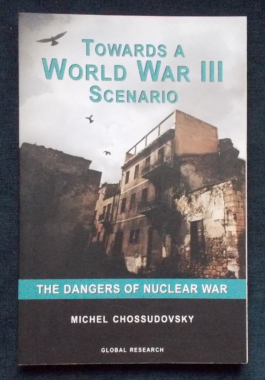 The author is a Professor of Economics and Director of the Centre for Research on Globalisation. This book has been rated and reviewed as a "...'must' resource - a richly documented and systematic diagnosis of the...planning of U.S. Wars since 9-11" "...one of the most important books currently available...the information is heart rending, scary and absolutely accurate." ...a hard-hitting and compelling book (which) explains why and how we must undertake a concerted...campaign to head off the impending cataclysmic demise of the human race and planet Earth."
The author is a Professor of Economics and Director of the Centre for Research on Globalisation. This book has been rated and reviewed as a "...'must' resource - a richly documented and systematic diagnosis of the...planning of U.S. Wars since 9-11" "...one of the most important books currently available...the information is heart rending, scary and absolutely accurate." ...a hard-hitting and compelling book (which) explains why and how we must undertake a concerted...campaign to head off the impending cataclysmic demise of the human race and planet Earth." -
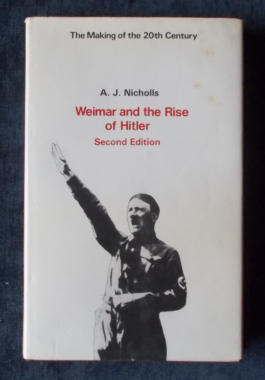 Regarded as the classic text on the Weimar Republic, Nicholls begins with Germany's defeat in 1918 and the revolutionary disturbances that followed the collapse of Wilhelm II's Empire. It describes the strengths and weaknesses of the new regime, and the stresses created by the economic difficulties of the 1920s. Adolf Hitler's career is traced from its early beginnings in Munich, and the nature of his movement is assessed.
Regarded as the classic text on the Weimar Republic, Nicholls begins with Germany's defeat in 1918 and the revolutionary disturbances that followed the collapse of Wilhelm II's Empire. It describes the strengths and weaknesses of the new regime, and the stresses created by the economic difficulties of the 1920s. Adolf Hitler's career is traced from its early beginnings in Munich, and the nature of his movement is assessed. -
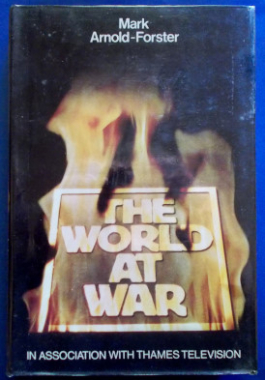
World War II, the most massive and appalling military conflagration in history began on September 1, 1939 when Hitler's troops invaded Poland and from there, it spread inexorably in all directions. On December 7 1941, the Japanese bombed Pearl Harbour, thus bringing the huge American armies into the picture and the Pacific was ablaze as Japan and America fought a devastating island-hopping war across the ocean. As well as swallowing millions of lives, the demands of the military machine gave rise to the atom bomb and the computer; the British Empire was dying but the Commonwealth was heralded; the war made Churchill and the 'spiv'; it created rationing and the Welfare State; it slaughtered 6,000,000 Jews, broke marriages and laid waste to the European economy. This is a graphic account of the fateful years that changed the world forever. Illustrated with black and white photos.
-

 Australian Richard Hillary joined RAF Fighter Command’s 603 Squadron in July 1940, then based in Scotland and flying the new Supermarine Spitfire. On 27 August 1940 the squadron moved south to London, the epicentre of the Battle of Britain, and within a week Hillary had shot down five Messerschmitt 109s, becoming an ‘ace’. But on his last sortie he was shot out of the sky over Dungeness, the cockpit of his Spitfire became engulfed in flames and Hillary was grievously burned as he desperately tried to bale out. Hillary was soon to become the most famous patient of the RAF’s pioneering plastic surgeon, Archibald McIndoe, and member of his ‘Guinea Pig Club’. He would endure months of painful surgery in an attempt to repair the damage to his hands and face, and allow him to return to active duty. Originally published in 1942, just months before he died in a second crash, The Last Enemy recounts the struggles and successes of a young man in the Royal Air Force.
Australian Richard Hillary joined RAF Fighter Command’s 603 Squadron in July 1940, then based in Scotland and flying the new Supermarine Spitfire. On 27 August 1940 the squadron moved south to London, the epicentre of the Battle of Britain, and within a week Hillary had shot down five Messerschmitt 109s, becoming an ‘ace’. But on his last sortie he was shot out of the sky over Dungeness, the cockpit of his Spitfire became engulfed in flames and Hillary was grievously burned as he desperately tried to bale out. Hillary was soon to become the most famous patient of the RAF’s pioneering plastic surgeon, Archibald McIndoe, and member of his ‘Guinea Pig Club’. He would endure months of painful surgery in an attempt to repair the damage to his hands and face, and allow him to return to active duty. Originally published in 1942, just months before he died in a second crash, The Last Enemy recounts the struggles and successes of a young man in the Royal Air Force. -

Being Reports on Various New Zealand Towns and Country Places and On Some of the Doings of Their People as Described in Korero, Magazine of the Army Education Welfare Service. Korero was an illustrated troop magazine, a fortnightly bulletin that contained articles, sketches and verse of interest to members of the Armed Forces. Contributions were sought from individuals within the New Zealand Armed Forces and were intended to give New Zealanders serving overseas a brief survey of the towns and districts they had left. A maximum of £3 in canteen orders was made as payment. The surveys are not profound social studies nor are they superficial - but they are observant and sympathetic. Drawings were used rather than photographs as photographs did not reproduce well on newsprint. Illustrated with excellent black and white sketches. Korero is Maori for talk, discussion or meeting.
-
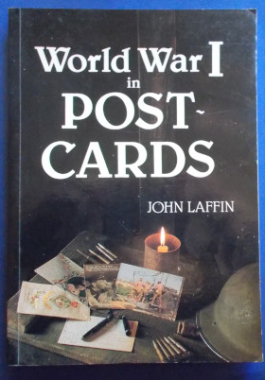 The extraordinary phenomenon of the war postcard - reflections of the full range of responses to the most murderous and ghastly of all wars. The chapters herein include: story postcards, military subjects, heroism and agony, religious themes, humour, animal and field postcards - even those embroidered with silk and very beautiful still today. Even propaganda is represented. Almost three hundred post cards are reproduced - individual historic documents of a bygone age. Photos in colour and black and white.
The extraordinary phenomenon of the war postcard - reflections of the full range of responses to the most murderous and ghastly of all wars. The chapters herein include: story postcards, military subjects, heroism and agony, religious themes, humour, animal and field postcards - even those embroidered with silk and very beautiful still today. Even propaganda is represented. Almost three hundred post cards are reproduced - individual historic documents of a bygone age. Photos in colour and black and white. -
 A detailed history of the World War II American B-29 Enola Gay, its crew, and the controversial mission to drop the atomic bomb on Hiroshima, Japan. Painstakingly researched, the story behind the decision to send the Enola Gay to bomb Hiroshima is told through firsthand sources. From diplomatic moves behind the scenes to Japanese actions and the US Army Air Force’s call to action, no detail is left untold. Touching on the early days of the Manhattan Project and the first inkling of an atomic bomb, investigative journalist Gordon Thomas and his writing partner Max Morgan-Witts, take WWII enthusiasts through the training of the crew of the Enola Gay and the challenges faced by pilot Paul Tibbets. Illustrated with black and photographs.
A detailed history of the World War II American B-29 Enola Gay, its crew, and the controversial mission to drop the atomic bomb on Hiroshima, Japan. Painstakingly researched, the story behind the decision to send the Enola Gay to bomb Hiroshima is told through firsthand sources. From diplomatic moves behind the scenes to Japanese actions and the US Army Air Force’s call to action, no detail is left untold. Touching on the early days of the Manhattan Project and the first inkling of an atomic bomb, investigative journalist Gordon Thomas and his writing partner Max Morgan-Witts, take WWII enthusiasts through the training of the crew of the Enola Gay and the challenges faced by pilot Paul Tibbets. Illustrated with black and photographs. -
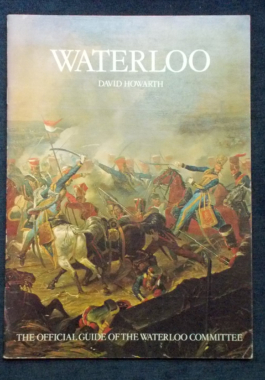 Believed to be the first guide to the battlefield written in English by an English writer, who is probably also the greatest living expert on Waterloo. There's descriptions of the battle location, weaponry and tactics that were all implement in a few hours on June 187, 1815. Illustrated.
Believed to be the first guide to the battlefield written in English by an English writer, who is probably also the greatest living expert on Waterloo. There's descriptions of the battle location, weaponry and tactics that were all implement in a few hours on June 187, 1815. Illustrated. -

Australia was almost defenceless against Japanese attack in 1942. Here it is suggested that vital lessons for today can be learnt from that period. Did the Australian leaders rely too heavily on Britain and were they let down? How much can Australia rely on any country for support in wartime? From the days of the First Fleet it was always accepted that the United Kingdom would send its fleet to defend Australia. For this reason Australia sent troops overseas as early as 1885 to help fight Imperial wars. The situation changed after 1918 for then Japan became a likely enemy. Could Britain defend Australia from attack and conduct a war in Europe? Dr. McCarthy examines both sides of the question and concludes that it was never possible.
-

The author, a TV reporter and journalist, has condensed his experiences and observations of the Indo-China battlefields over a thirty-five year period. Sights, sounds and smells come alive in the graphic and vivid recreation by a neutral yet passionately involved eye-witness. Scholl-Latour first traveled to South-East Asia on a troop-ship in 1945 and since then has covered three wars: the war against French colonialism, the American involvement in Vietnam and the final devastation of Kampuchea. He sees those years as a tragedy that has shattered every illusion of freedom as the French, the Americans and the Khmer Rouge each tried to impose their versions of freedom by force.



